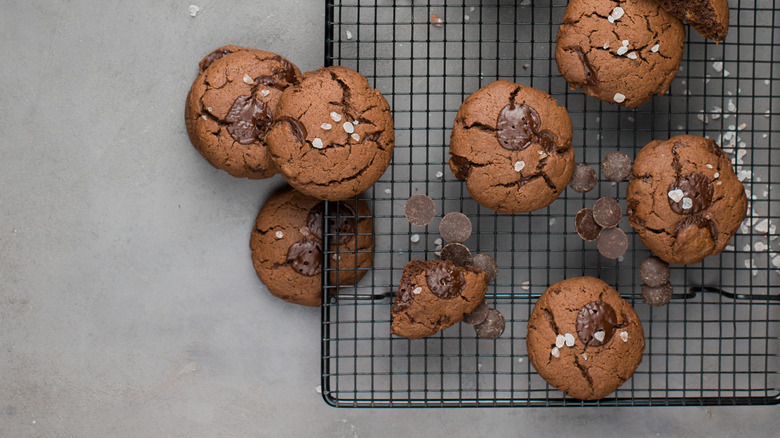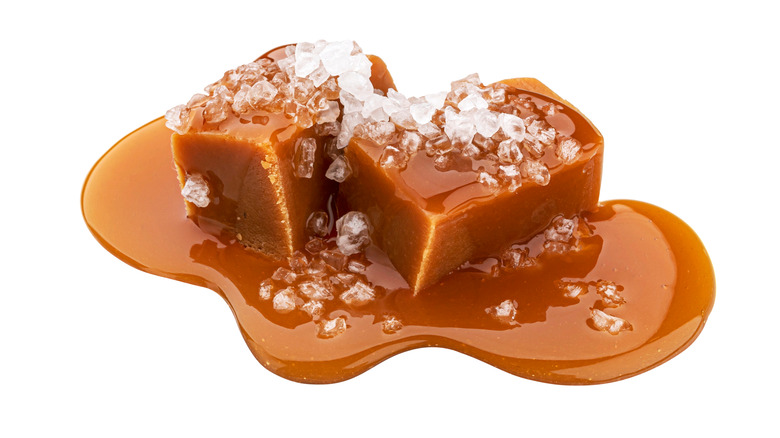The Ingredient Duff Goldman Thinks You Need For Every Dessert
Undoubtedly, most cooks use salt as seasoning. After all, who doesn't like a basket of salty fries or a bucket of movie theater popcorn tossed with an extra hit of sodium? However, anyone who has found themselves in the kitchen whipping up some batter or kneading dough has noticed that salt plays an important role there as well. The addition of even a small amount of salt is a feature in countless dessert recipes. Though it may seem counterintuitive, salt is an important ingredient in many sweets.
In an interview with People, Food Network host and cookbook author Duff Goldman recommended that bakers use it in just about everything. "I know it sounds weird, but cookies, cakes, pies and ice cream all taste much better with a big ol' pinch of salt in there," he said. "I'm not talking about turning desserts salty: They'll just be well-seasoned, so they taste balanced and not cloyingly sweet." Goldman's assertion isn't just personal bias either. The key role of salt in baked goods is very real and comes down to science.
The science behind salt in sweets
As the saying goes, opposites attract. Never has that been more true than when sweet and salty come into contact with one another. According to the Institute for Quality and Efficiency in Health Care, the spectrum of flavors that are contained in your food can be broken down into five distinct tastes. There's sweet, which is experienced in the presence of sugar, fructose, or lactose. Then, there's salty, obviously experienced when you eat something with a significant amount of sodium in it.
According to the Proceedings of the National Academy of Sciences, a group of scientists recently found that sodium is necessary to help sugars move into cells. This molecular necessity may be the way salt enhances the flavor of sweet goods. It's possible that salty and sweet aren't just complimentary — they might be chemically and biologically linked to create the best flavor possible.
Almost all desserts can be improved with salt
There are several ways to use salt in desserts, and you must use the right type for the task at hand. If you're looking to give your sweet treat a salty finish, that's Goldman's assertion isn't just personal bias either. The key role of salt in baked goods is very real and comes down to science. Consider coarse salt. As per Baking Bites, the large grains of coarse salt often won't properly disperse in a dish, so it's best suited to garnishing. Throw a pinch on top of your chocolate chip cookies or gooey brownies to make the sweetness sing.
When you're mixing salt directly into your dessert, you should use a fine-grained variety, like standard table salt, according to King Arthur Baking. The minuscule crystals of table salt allow it to dissolve perfectly into your dough or batter, which will lead to an even distribution of flavor in your final product.
A relatively recent addition to the world of salty and sweet snacks is salted caramel, which was invented by French chocolatier Henri Le Roux in 1977 (via Maison La Roux). BBC Good Food explains that the sweet and salty contradiction of salted caramel sets into motion a process called "hedonic escalation," in which you experience a growing desire to eat more of something as you consume it.


